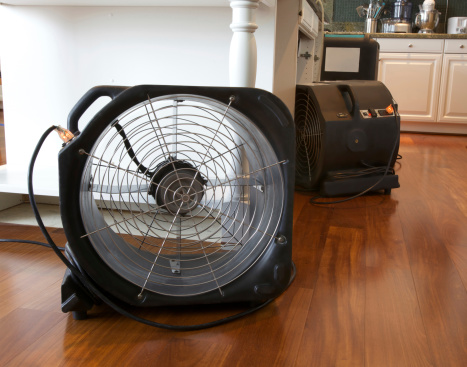A sewer backup can have any number of causes: a blockage in your pipes could cause a backflow, pipes or septic tanks can rupture, or floodwaters can infiltrate the sanitary system and cause an overflow. Sewage leakage presents additional challenges to flood cleanup attempts but must still be handled promptly and effectively in order to both protect your possessions and the health of you and your family.
Sewage contains numerous bacteria, fungi, parasites, and viruses that can infect you through various methods. The most common are hand-to-mouth contact (eating or drinking using a hand that’s touched contaminated water), by entering through cuts or open wounds, or when you wipe your face or eyes. Some bacteria and viruses can also be transmitted by being sprayed or by inhaling infected water. The diseases you could contract from being exposed to sewage contaminated materials vary from a minor stomach bug to a serious condition like typhoid or cholera depending on the source and level of contamination.
Staying Safe
When managing a sewage backup cleanup, or even when navigating an area that has contaminated water, certain precautions are needed to minimize the chances of infection:
- Wear rubber boots, gloves, and goggles at all times while within the affected area.
- Wash your hands with soap and warm water. The best water is that which has been boiled for one minute and allowed to cool.
- Wash clothes worn during cleanup in a separate load from uncontaminated clothing and be sure to use both hot water and detergent. Since your home has just experienced a flood situation, it is best to have the wastewater system inspected before using your washing machine.
- If you have any open cuts or sores, keep them as clean as possible. Wash them with soap and antibiotic ointment.
- If you become injured or ill, seek medical attention immediately.
Decontaminate or Dispose?
Any possessions or building materials that have been exposed to contaminated flood waters need to be addressed:
- Any drywall or insulation that has been saturated with sewage or flood water needs to be removed and replaced.
- Carpeting, mattresses, padded rugs, stuffed animals, pillows, foam rubber objects, books, and most paper products cannot be effectively washed and disinfected; these items need to be thrown out.
- If you have a child, do not let them play with any toys that have not been disinfected.
- All hard surfaces must be thoroughly scrubbed down with warm water and antimicrobial treatments/agents.
- NEVER mix bleach and ammonia; the result will be a toxic gas that will only make your problems worse.
- Dehumidifiers and air scrubbers can be used to speed up the drying process.
- Make sure to have your septic system inspected to ensure that it has not been damaged.
- Take photos of the affected areas before you begin removing items, furnishings, or parts of the wall. This will be useful when filing insurance claims.
Professional Help
Managing an effective flood or sewage cleanup is a daunting and stressful task. Flood Services Canada stands ready to provide quick-response cleanup services across the GTA and will use the best techniques, personnel, and technology to ensure your home is clean, safe, and dry as soon as possible. Visit the Flood Services Canada web site for more information on what to do after a flood or sewage backup.

